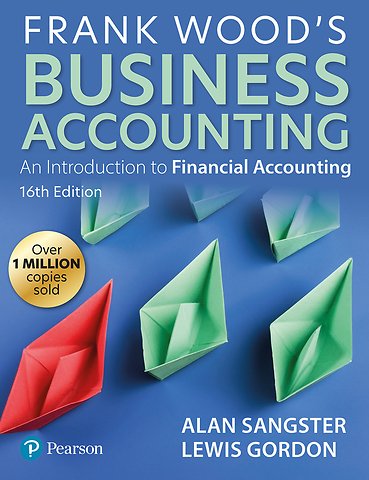Frank Wood's Business Accounting
Paperback Engels 2025 9781292727783Samenvatting
"If you have no knowledge of accounting whatsoever, this is the book you would want to use. It takes you through slowly, bit-by-bit, and chapters are short and to the point. I love this book."
Caroline Teh, Assistant Professor, Jönköping University, Sweden This comprehensive and accessible introduction to financial accounting is the world's bestselling textbook in its field.
Frank Wood's Business Accounting is the ideal book for anyone taking a first course in financial accounting at university or college. It is known for its clear, readable style, as well as its comprehensive range of examples, activities and exercises.
Used by generations of students across the world, this hugely popular text provides a thorough and up-to-date introduction to the subject, including all the financial accounting fundamentals required by major accountancy exam bodies.
Key features of this edition include: Short, manageable chapters, allowing you to build up your knowledge step by step A wide range of in-chapter activities, many of which are new for this edition, enabling you to continually test your understanding as each topic is covered Comprehensive sets of end-of-chapter questions (over 100 of which are new for this edition) along with five banks of multiple-choice questions (over 50 of which are new), supporting active learning of core financial accounting topics Fully integrated and up-to-date coverage of relevant International Financial Reporting Standards (IFRS) Substantial updates to more than half of the 35 chapters, ensuring continued alignment with modern accounting techniques as well as incorporating many more worked examples and in-chapter activities Enhanced coverage of ratio analysis, with a greater emphasis on interpreting the financial statements of companies
Also available with MyLab Accounting
MyLab™ Accounting enables students to master concepts and develop their accounting skills. By combining a range of over 775 varied questions and accounting problems with flexible tools to help students at point-of-need and short videos on crucial concepts, MyLab engages students and improves results.
Alan Sangster is Professor of Accounting History at the University of Aberdeen and was previously Professor of Accounting at universities in the UK, Brazil and Australia.
Lewis Gordon is Senior Lecturer in Accounting at the University of Liverpool, and has extensive experience of teaching financial accounting at undergraduate and professional levels.
Frank Wood was the original author of this text and remains one of the world's best-selling authors of accounting textbooks.
Pearson, the world's learning company.
Specificaties
Lezersrecensies
Inhoudsopgave
Rubrieken
- advisering
- algemeen management
- coaching en trainen
- communicatie en media
- economie
- financieel management
- inkoop en logistiek
- internet en social media
- it-management / ict
- juridisch
- leiderschap
- marketing
- mens en maatschappij
- non-profit
- ondernemen
- organisatiekunde
- personal finance
- personeelsmanagement
- persoonlijke effectiviteit
- projectmanagement
- psychologie
- reclame en verkoop
- strategisch management
- verandermanagement
- werk en loopbaan

